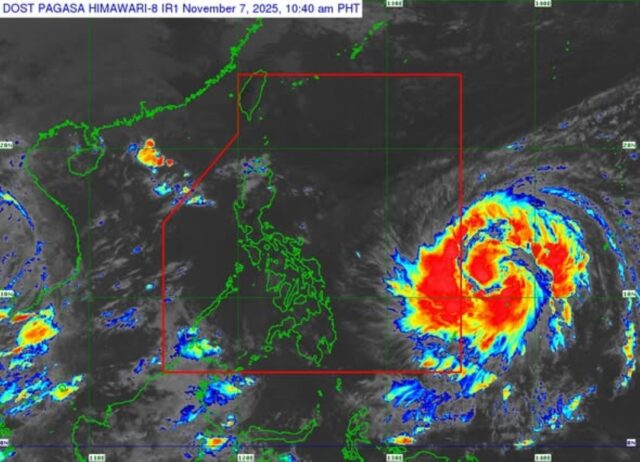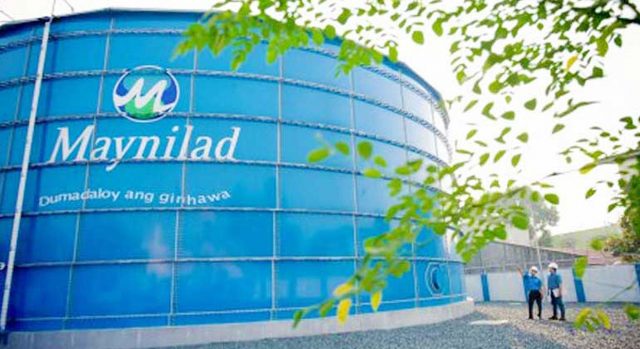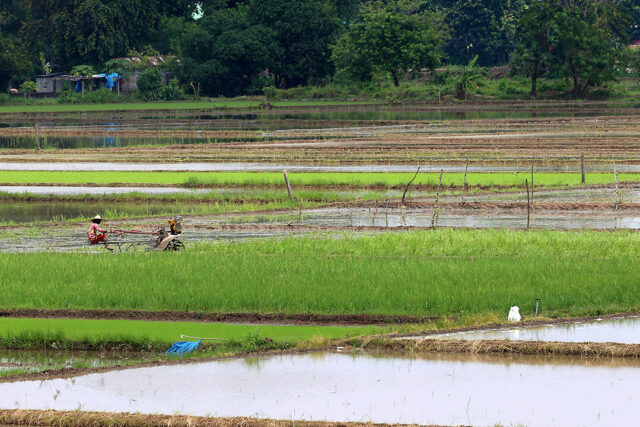Mouthwash may cure ‘the clap’
PARIS — In the 19th century, before the advent of antibiotics, Listerine mouthwash was marketed as a cure for gonorrhoea. More than 100 years later, researchers said Tuesday the claim may be true.
DepEd TV pushed to boost learning continuity

The Department of Education (DepEd) on Thursday said it will revitalize DepEd TV in partnership with Knowledge Channel Foundation Inc. (KCFI) and Solar Pictures, Inc., to address learning continuity during calamities.
“The revitalized DepEd TV marks a new phase in the department’s push for inclusive, technology-enabled, and climate-resilient education, ensuring that no learner is left behind,” the department said in a news release.
DepEd TV, a flagship educational broadcast platform, was part of the blended learning initiatives during the COVID-19 pandemic in 2020 and ceased operations in 2022.
The broadcast platform aligns with DepEd’s Alternative Delivery Modes (ADM) and Academic Recovery and Accessible Learning (ARAL) initiatives, which teach students through accessible and non-Internet-based mediums.
Education Secretary Juan Edgardo “Sonny” M. Angara noted that the revival of the broadcast platform is driven by the calamities that made learning continuity difficult.
“We have communities where learners study in temporary shelters and teachers persevere despite losing their classrooms due to earthquakes or typhoons,” he said.
“These are the realities of our new normal. It is difficult, but deeply reassuring to know that partners like you continue to stand with us in keeping education going,” he added.
Data from the Second Congressional Commission on Education (EDCOM II) revealed that more than 20 school days were lost in School Year 2023-2024 due to climate-related events. The suspension has impacted over 11 million learners, or about 42% of public school students.
Under the tripartite Memorandum of Agreement of the three institutions, it aims to advance 21st-century learning delivery, media integration in classrooms, and content-based pedagogy.
KCFI has committed to supplying educational content and materials aligned with DepEd’s curriculum standards, while Solar Pictures will provide the digital terrestrial television channel for DepEd TV programming.
“We remain dedicated to delivering engaging, culturally grounded, and gender-sensitive lessons that make learning stick—supported by data, feedback, and continuous improvement,” KCFI President Elvira “Rina” M. Lopez-Bautista said in the same release.
Solar Pictures President and Chief Executive Officer Wilson Y. Tieng added that the initiative aims to impact millions of Filipino students. “We look forward to this journey together and to witnessing the impact this collaboration.”— Almira Louise S. Martinez
Fung-Wong intensifies into a severe tropical storm as it approaches PAR
Tropical Cyclone Fung-Wong (international name) has intensified into a severe tropical storm as it continues to approach the Philippine Area of Responsibility (PAR), and may further strengthen into a super typhoon, according to the state weather bureau on Friday.
Fung-Wong, which will be locally named Uwan once it enters PAR, was packing maximum sustained winds of 100 kilometers per hour (kph) and gustiness of up to 125 kph, the Philippine Atmospheric, Geophysical and Astronomical Services Administration (PAGASA) said in its 11:00 a.m. advisory.
It was last located 1,315 kilometers east of Eastern Visayas, moving west-northwestward at 20 kph.
By Friday evening or Saturday morning, Fung-Wong is likely to enter the PAR, PAGASA said. It is also forecast to undergo rapid intensification, potentially reaching typhoon category within 24 hours, and possibly becoming a super typhoon by Saturday evening or Sunday morning.
At its peak intensity, it will likely make its first landfall over the southern portion of Cagayan or the northern portion of Isabela late Sunday evening or early Monday morning.
Fung-Wong is then expected to traverse the mountainous terrain of Northern Luzon and emerge over the West Philippine Sea by Monday morning or afternoon.
Up to Tropical Cyclone Wind Signal (TCWS) No. 5 may be raised in some of the affected areas, PAGASA said. The state weather bureau added that it will begin issuing warning signals by Friday afternoon or evening, likely over portions of Southern Luzon, Eastern Visayas, and Caraga, in preparation for the storm’s effects.
Storm surge warnings may also be issued in affected coastal areas by Saturday, particularly in Northern Luzon and along the eastern coast of Central and Southern Luzon.
PAGASA advised the public to continuously monitor updates on Fung-Wong as it approaches the country.— Edg Adrian A. Eva
Maynilad Water shares debut steady after $590 million Philippine IPO
MANILA/SINGAPORE – Shares of Maynilad Water Services were little changed in their Philippine debut on Friday after the utility raised 34.3 billion pesos ($590 million) in the country’s largest listing since 2021.
Maynilad, the largest private water concessionaire in the Philippines, serves the west zone of Metro Manila and parts of Cavite province.
Its stock opened at 15 pesos, matching the IPO offer price, and last traded at 14.98 pesos, down 0.13%, with an intraday range of 14.98 to 15.00, according to Philippine Stock Exchange data. The benchmark PSE index dropped 0.7%.
The IPO comprised 1.66 billion common shares and 24.9 million shares allocated to First Pacific Co Ltd to maintain its current shareholding, according to the prospectus. The offer includes an overallotment option of up to 249 million shares and an upsize option of 354.7 million secondary shares.
Proceeds will fund capital expenditure and general corporate purposes, the company said.
“This IPO is really the culmination of all those years of hard work, the result of everyone’s effort to improve, to grow, and to deliver better service for our customers,” Maynilad President and CEO Ramoncito Fernandez told reporters during a briefing on Friday.
International Finance Corp and Asian Development Bank were lead cornerstone investors, alongside domestic and international institutions including BDO Capital, BPI Asset Management, abrdn Malaysia, and Maybank Asset Management Singapore.
“The international investors that we’ve attracted will bring global standards to Maynilad in sustainability, in governance, and even in operational excellence,” he said.
The IPO was arranged by BPI Capital as domestic lead underwriter, with HSBC, Morgan Stanley, and UBS as joint global coordinators.— Reuters
Typhoon Kalmaegi death toll nears 200 in Philippines, brings rain and destruction in Vietnam

HANOI – Coastal areas in Vietnam were assessing the damage from Typhoon Kalmaegi’s destructive winds and heavy rain on Friday, with one death reported by state media, following its deadly passage through the Philippines where it killed at least 188 people.
The storm made landfall in central Vietnam late on Thursday, uprooting trees, damaging homes, and triggering power outages, before weakening as it moved inland. Authorities warned of continuing heavy rainfall of up to 200 millimeters (8 inches) in central provinces from Thanh Hoa to Quang Tri.
As the storm’s death toll climbed in the Philippines, officials there said another 135 people remained missing and 96 had been injured.
In Vietnam, no official casualty figures had been released but state-run Vietnam News Agency reported one fatality in Dak Lak province in a collapsed house. Photos and videos on social media showed ripped-off roofs, flooded homes, and streets littered with fallen trees and debris.
The government said it had mobilized over 268,000 soldiers for search-and-rescue operations and warned of potential floods in low-lying areas, which could affect agriculture in the Central Highlands, Vietnam’s main coffee-growing region.
Kalmaegi is the 13th typhoon to form in the South China Sea this year. Vietnam and the Philippines are highly vulnerable to tropical storms and typhoons due to their locations along the Pacific typhoon belt, regularly experiencing damage and casualties during peak storm seasons.
The Philippines’ civil aviation regulator has placed all area centers and airport operations under heightened alert in preparation for another typhoon that is expected to affect parts of the country this weekend.—Reuters
Philippine growth slows sharply in Q3 as ‘shocking’ corruption scandal dents confidence
MANILA — The Philippines’ economic growth slowed sharply in the third quarter, missing market expectations, as a “shocking” corruption scandal linked to government infrastructure projects hammered consumer and investor confidence.
Gross domestic product grew 4.0% in the third quarter from a year earlier, well below the 5.2% forecast in a Reuters poll and significantly weaker than the 5.5% expansion recorded in the previous quarter, the statistics agency said.
The weaker-than-expected performance, combined with subdued inflation, has increased the likelihood of a fifth straight interest rate cut at the central bank’s policy meeting in December.
Economic Planning Secretary Arsenio Balisacan acknowledged that achieving even the lower end of the government’s 5.5% to 6.5% growth target for the year will be difficult.
“The productive capacity that we had wanted to happen was muted by all this corruption,” Balisacan said at a press briefing. “It’s just so shocking to see how extensive it was.”
Authorities are currently investigating allegations of corruption involving infrastructure projects, particularly flawed flood-control facilities, in a scandal that has shaken the graft-weary nation.
The probe has implicated several government officials and lawmakers, raising concerns about the integrity of public spending and further eroding investor sentiment.
Public spending rose 5.8% year-on-year in the third quarter, its slowest pace since the same period in 2024, as stricter validation procedures delayed the release of funds for government projects.
Government spending on infrastructure contracted by 26.2%, the worst in nearly 14 years as stricter measures were enforced to curb misuse of funds.
Household consumption, a key growth driver, grew only 4.1%, its weakest since the first quarter of 2021, as consumers deferred major purchases, particularly of durable goods.
Adding to the slowdown, the country is also grappling with a series of natural disasters, including a super typhoon, which disrupted economic activity and infrastructure in parts of the country during the quarter.
“The third quarter’s performance reminds us of the urgent need to address key challenges and strengthen our foundations for rapid, sustained, and inclusive growth,” Balisacan said.
On a seasonally adjusted basis, GDP expanded 0.4% quarter-on-quarter, below the 0.8% median forecast in a Reuters survey of economists. — Reuters
Google deal makes Amazon reforestation its top source of carbon removal credits
BELEM — Google has agreed to finance restoration of the Amazon rainforest in its biggest deal yet for carbon removal credits, as Big Tech hunts for high-quality credits to offset emissions tied to energy-hungry data centers.
Google and Brazilian reforestation startup Mombak told Reuters the deal would offset 200,000 metric tons of carbon emissions. That is four times the volume of a pilot offtake agreement in September 2024 with Mombak, Google’s sole provider of forestry carbon credits.
Both companies declined to comment on the value of the deal.
The agreement highlights how Big Tech is looking for ways to soften the climate impacts of its huge investment in power-intensive data centers for AI, driving demand to offset carbon emissions through Brazil’s nascent reforestation industry.
Last year, Alphabet’s Google committed more than $100 million to an array of different carbon removal technologies, from enhanced rock weathering and biochar to direct air capture and a project changing river acidity.
But when it came time to double down, it was hard to beat the efficiency of planting trees.
“The most derisked technology we have to reduce carbon in the atmosphere is photosynthesis,” said Randy Spock, Google’s head of carbon credits and removal, citing the process by which plants use sunlight, water, and carbon dioxide to produce oxygen and glucose.
Brazil, which is hosting the United Nations climate summit known as COP30 in the Amazon city of Belem this month, has touted the talks as the “Forest COP” to promote conservation efforts such as a proposed new fund for tropical forests.
Norway, Indonesia and Brazil have committed $5 billion to the Tropical Forests Forever Facility, officials announced on Thursday.
PUSH FOR CREDIBLE OFFSETS
Much of Google’s greenhouse gas emissions come from the electricity it buys for its data centers and offices. Those so-called market-based scope 2 emissions more than tripled from 2020 to 3.1 million tons of CO2 equivalent last year, according to the company’s latest environmental report.
Google has steered clear of REDD credits, Spock said, which reward developers for preserving parts of the forest that would otherwise be destroyed. That market has been rattled by alleged fraud and ties to illegal loggers in Brazil.
“The reason we quadrupled down on Mombak is they’ve got a very credible approach,” he said.
Mombak, which turns degraded pastureland back into jungle, is benefiting from a “flight to quality,” its co-founder and Chief Executive Officer Gabriel Silva said.
“Buyers were previously buying carbon credits but didn’t know what they were buying. So they got involved in poor-quality, sometimes fraudulent projects,” he said.
To raise the bar for nature-based carbon removal, Google joined forces last year with Meta, Salesforce, McKinsey, and Microsoft, the biggest buyer to date, creating a group of buyers called the Symbiosis Coalition.
The coalition, which said on Thursday it had expanded to include Bain & Company and REI Co-op, has vowed to contract over 20 million tons of nature-based carbon offsets by 2030 that meet its more rigorous scientific standards.
That includes demands for conservative and transparent carbon accounting standards, long-term preservation and benefits for biodiversity and local communities. Of 185 projects reviewed by the coalition, Mombak’s is the first to meet those standards.
Brazil is the country with the most projects seeking the coalition’s endorsement, said Symbiosis Executive Director Julia Strong, adding that she expected more to clear the bar soon.
Still, a scarcity of credits meeting the highest standards – and the deep pockets of those willing to pay for them – have pushed up prices. While REDD credits can retail for under $10 per ton of carbon dioxide offset, Brazil’s new reforestation startups have fetched more than $50 and even $100 per ton.
“Companies are getting more efficient, in terms of producing at lower prices. We are on that path,” said Mr. Silva of Mombak. “But right now there’s way more demand than supply.”— Reuters
Trump to meet Central Asian presidents as US seeks to counter China, Russia influence
US President Donald Trump will host the leaders of five Central Asian nations at the White House on Thursday as the US seeks to gain influence in a region long dominated by Russia and increasingly courted by China.
The talks take place amid intensifying competition for Central Asia’s vast mineral resources. Western nations are seeking to diversify supply chains away from Moscow and Beijing.
In particular, the US is pursuing new partnerships to secure critical minerals, energy, and overland trade routes that circumvent its geopolitical rivals.
Launched in 2015, the so-called C5+1 platform brings together the United States and the five Central Asian states — Kazakhstan, Kyrgyzstan, Tajikistan, Turkmenistan, and Uzbekistan — to advance cooperation on economic, energy and security issues. Their leaders will also attend a dinner with Mr. Trump at the White House on Thursday.
CRITICAL MINERALS MEMORANDUM SIGNED
US and Kazakh representatives signed a memorandum of cooperation on critical minerals, according to the news service of the country’s President Kassym-Jomart Tokayev. It did not elaborate. The White House had no immediate comment on that report.
Among business deals to be announced is an agreement for Boeing to sell up to 37 airplanes to airlines in Kazakhstan, Tajikistan and Uzbekistan combined, according to a government statement. A US company, Cove Capital, will mine tungsten in Kazakhstan with government-backed financing.
Kazakhstan was also set to take a symbolic step of joining the Abraham Accords that have normalized relations between Israel and Muslim-majority nations, according to a senior US official.
Gracelin Baskaran, a director at the Center for Strategic and International Studies, said the administration will pursue government-to-government engagement but also commercial deals that secure US access to vital minerals.
“As China and Russia entrench their control over the region’s mining, processing, and infrastructure systems, Washington is seeking to establish a tangible foothold through targeted strategic projects,” Baskaran said.
NATIONS ARE RICH IN URANIUM, COPPER, GOLD
Rich in minerals and energy, the five nations remain economically tied to Russia, their former Soviet ruler, while neighboring China has expanded its influence through large-scale infrastructure and mining investments.
Together, the countries are home to 84 million people and hold vast deposits of uranium, copper, gold, rare earths and other strategic minerals essential to global efforts to transition to greener forms of energy.
Kazakhstan, the region’s largest economy, is the world’s leading uranium supplier, producing nearly 40% of global output in 2024, while Uzbekistan ranks among the top five.
Together, they account for just over half of the world’s uranium production — a vital resource for US nuclear power, which is a significant source of US electricity. Russia supplies roughly 20% of the US’ imported uranium, making diversification increasingly urgent.
Under Mr. Trump, the US has pursued a multi-pronged strategy to secure critical minerals and reduce reliance on China, which dominates global supply chains for strategic metals including uranium, rare earth elements, copper, and titanium.
China, at times, has leveraged its dominance by restricting exports.— Reuters
Traffic to resume at Sweden’s second-biggest airport after drone scare

GOTHENBURG — A drone incident that prompted a sabotage investigation and halted traffic at Sweden’s second-largest airport ended on Thursday night with flights preparing to resume.
Drones have caused major disruption across Europe in recent months, forcing temporary airport closures in several countries. Some officials have blamed the incidents on hybrid warfare by Russia. Moscow has denied any connection with the incidents.
One or more drones were observed at the Gothenburg-Landvetter Airport on Sweden’s west coast around 1641 GMT, authorities said earlier on Thursday, forcing more than a dozen flights to be rerouted or canceled.
“Police have now informed us that the incident is over and we therefore plan to start traffic back up again,” state-owned airport operator Swedavia told Reuters in a text message.
“We have launched an investigation into suspected aviation sabotage,” the police spokesperson said.
On Tuesday, drone sightings forced closures of airports and a military air base in Belgium in what the country’s defense minister called a coordinated attack.
On Thursday, police in Sweden’s neighbor Norway said they had closed a probe into suspected sightings that caused a shutdown of Oslo’s airport in September, citing insufficient evidence that drones had been present.
In neighboring Denmark, several airports, including Copenhagen, also closed temporarily in September due to reported drone sightings.— Reuters
US government shutdown drags on as senators fail to find path out

WASHINGTON — US Senate Democrats continued to hold out on agreeing to end the record-long federal government shutdown on Thursday, despite Republican overtures to reverse federal employee layoffs as part of a bid to reopen shuttered agencies.
Democrats spent nearly two hours in their second closed-door caucus meeting in as many days on the 37th day of the longest government shutdown in US history, which has furloughed about 750,000 federal employees, forced thousands more to work without pay and shut off food assistance and Head Start subsidies for millions of Americans, including children. A new pressure point was expected to open in the days ahead as major US airports braced for a 10% cut in airline flights due to a lack of pay for air-traffic controllers.
Republicans hold a 53-47 majority but need 60 votes to reopen the government. With one Republican opposed to short-term funding, Senate Majority Leader John Thune of South Dakota would need at least eight Democrats to break with their party. Up until now, only two Democrats and an independent who caucuses with them have been willing to do so.
Senate Democratic leader Chuck Schumer of New York described the session as “a very good, productive meeting.” Others struck similarly upbeat tones.
But some Democrats were less sanguine. “I don’t know how productive it was in there,” said Senator John Fetterman, of Pennsylvania, one of only three members of the Senate Democratic conference to support a short-term bill to reopen the government.
Republicans said they offered Democrats a path to reopening the government that included a short-term stopgap funding measure and a package of full-year appropriations bills to pay for agriculture programs including food assistance, military construction, veterans affairs, and the legislative branch.
POSSIBLE REVERSAL OF LAYOFFS
In bipartisan talks, Republicans have also shown an openness to reversing some of the mass federal workforce layoffs ordered by President Donald Trump’s White House and protecting federal jobs from future cuts.
“The discussion was a healthcare discussion, and in the last few days, it’s also become a discussion about what I’ve been calling the moratorium on mischief,” Democratic Senator Tim Kaine of Virginia told reporters.
A short-term bill to fund federal agencies through November 21 has failed 14 times in the Senate, with opposition from Democrats who demand that Republicans first agree to negotiate an extension of federal healthcare subsidies. Republicans say the government must reopen first. A 15th vote on the bill was expected on Friday.
“We have to make sure we have a deal that we can get broad support for,” said Democratic Senator Gary Peters of Michigan, who has been involved in bipartisan talks. “There are a lot of things that have been kicked around as part of the deal. Nothing’s really crystallized.”
HOUSE MOVES UNCERTAIN
As an incentive to reopening the government, Mr. Thune has offered to give Democrats a Senate floor vote to extend expiring federal tax credits that help lower-income Americans pay for private health insurance. There was no such guarantee in the Republican-controlled House of Representatives .
“I’m not part of the negotiation,” House Speaker Mike Johnson of Louisiana told reporters. “I’m not promising anybody anything.”
Asked about that remark, Mr. Peters replied: “That’s a significant problem.”
Democrats have repeatedly called on Mr. Trump to begin negotiations on healthcare, a prospect that Republicans say should come only after the government reopens.
But Republican Senator Thom Tillis said the White House could intervene with House Republican leaders to guarantee a House vote on ACA tax credits, should legislation pass the Senate.
“That’s a legitimate task for the White House to take on,” said Mr. Tillis, of North Carolina. “They can at least signal that if you all get out of this, then we will allow a vote.”
If Senate Democrats and Republicans managed to reach a deal to reopen the government this week, agencies would still likely remain shuttered for days. Such a measure would require approval from the House before Mr. Trump could sign it into law.
House Republican leaders, who have kept the chamber out of session since before the shutdown began, have pledged to give members 48 hours’ notice before calling them back to Washington and 72 hours to review legislation before holding any votes.— Reuters
Philippine farm output jumps 2.8% in Q3
By Vonn Andrei E. Villamiel
THE PHILIPPINES’ agricultural production grew by 2.8% in the third quarter, as strong crops and poultry output offset the decline in livestock and fisheries, the Philippine Statistics Authority (PSA) said.
Data from the PSA showed the value of agriculture and fisheries production rose by 2.8% to P408.94 billion in the July-to-September period, a turnaround from the 3.6% contraction in the same period last year.
Quarter on quarter, farm output growth slowed from the eight-year high of 5.7%.
“This growth was driven by the increase in the value of crop and poultry production. However, the value of livestock and fisheries production contracted during the period,” the PSA said, citing constant 2018 prices.
At current prices, the value of production in agriculture and fisheries rose to P533.16 billion, lower than the previous quarter’s output of P606.86 billion.
In the first nine months, agricultural output averaged 3.5%, a turnaround from the -2.2% in the same period last year.
Agriculture Secretary Francisco P. Tiu Laurel, Jr. told reporters that the agriculture sector is “heading in the right direction.” He expressed confidence the sector will recover from last year’s 2.2% decline, which reflected the impact of El Niño and several typhoons.
Crops output, which accounted for 53.3% of the total value of agricultural production, jumped by 3% to P218 billion in the third quarter. This was a turnaround from the 5.2% decline in the same period last year.
In the first nine months, crop production growth averaged 5%, improving from the 4.7% decline in the same period last year.
Former Agriculture Secretary William D. Dar told BusinessWorld via Viber that crop production rose in the third quarter despite inclement weather due to an “increase in hectarage of rice, ability to bounce back to production, and distribution of agricultural inputs and machineries.”
Palay (unmilled rice) production rose 12.6%, rebounding from the 12.3% contraction a year ago. This increase in output was aided by a 15.7% increase in the land planted to rice.
Palay output rose by an average of 8.3% in the January-to-September period, a turnaround from the 7.7% decline last year.
PSA data showed corn production declined 2.9%, worse than last year’s decline of 0.6% in the same period.
Coconut registered a 2.1% drop, an improvement from a decrease of 3.5% last year.
Crops that saw a double-digit increase in the value of output include onion (77.3%), potato (47.8%), sugarcane (42.0%), coffee (25.9%), mongo (16.9%), tobacco (15.7%), and cabbage (13.3%).
On the other hand, the value of production contracted for abaca (15.4%) and sweet potato (11.4%).
Meanwhile, the poultry sector grew by an annual 10.6% to P75.96 billion in the third quarter, despite the threat of avian influenza. It accounted for 18.6% of total farm production during the period.
In the first nine months, the growth of poultry production averaged 9.1%, an improvement from the 6.8% growth recorded in the same period last year.
Chicken production recorded an annual gain of 12.4% by value, while chicken eggs and duck posted 7.7% and 0.6% growth, respectively.
Duck eggs, on the other hand, declined by 4.3% this quarter, slightly better than a 5.7% drop in the same period last year.
“Poultry is expected to continue to grow due to the presence of multinational companies engaged in poultry production who have the financial capital to address the biosecurity issues,” Danilo V. Fausto, president of the Philippine Chamber of Agriculture and Food, Inc. (PCAFI), told BusinessWorld via Viber.
LIVESTOCK, FISHERIES SLIP
Meanwhile, the value of livestock production declined by 1.9% in the third quarter, a slight improvement from the 6.7% contraction a year ago. It contributed P60.51 billion, accounting for 14.8% of the total value of agricultural production.
From January to September, livestock production contracted by 3.5%, unchanged from last year.
Dairy was the lone bright spot in the livestock sector, recording a significant 34.7% increase in output from 13.2% a year ago.
The hog sector declined by 1.4%, improving from the 8% contraction a year ago.
Carabao recorded the biggest decrease in production value at 9%, followed by goat at 7.7%. Cattle also slumped by 2.7%.
Mr. Dar also said that there is a need for interventions to address the spread of African Swine Fever (ASF), which continues to affect the hog sector.
“We need an all-society approach to put in place sustained and systematic measures to prevent the spread of ASF. There is a need to use a well-studied and developed vaccine against ASF undergoing biosafety regulations,” Mr. Dar said.
On the other hand, fisheries production fell by 2.7% to P54.47 billion in the third quarter, accounting for 13.3% of the total output. This was a slight improvement from the 4.7% decline in the third quarter of 2024.
For the first nine months, fisheries output dipped by 1.9%, worse than last year’s 0.8% drop.
Double-digit decline was seen for cavalla (talakitok, 20.3%), Bali sardinella (tamban, 13.3%), tiger prawn (sugpo, 11.6%), and P. Vannamei (10.8%).
The value of seaweed production also dropped by 15.7% in the third quarter.
Significant declines were also recorded for milkfish (bangus, 9.7%), mudcrab (alimango, 9.1%), slipmouth (sapsap, 7.4%), threadfin bream (bisugo, 6.7%), and roundscad (galunggong, 5.6%).
Double-digit growth was seen for bigeye tuna (tambakol/bariles, 52.8%), squid (22.6%), and skipjack (gulyasan, 15.9%).
More modest gains were recorded for grouper (lapu-lapu, 4.9%), tilapia (3.1%), yellowfin tuna (tambakol/bariles, 2.4%), frigate tuna (tulingan, 1.2%), and blue crab (alimasag, 1.2%).
Aside from extreme weather events, the closure of fishing season in some areas due to the degradation of fishery ecosystems and habitat likely contributed to the decline, according to Mr. Dar.
“We are a nation of islands where fisheries are perceived to be the competitive advantage of the country. More attention should be given to the fisheries sector to include intervention in the hatchery and fingerlings production, cold chain and storage, ice plants and supply logistics,” PCAFI’s Mr. Fausto said.
September jobless rate inches up amid natural disasters
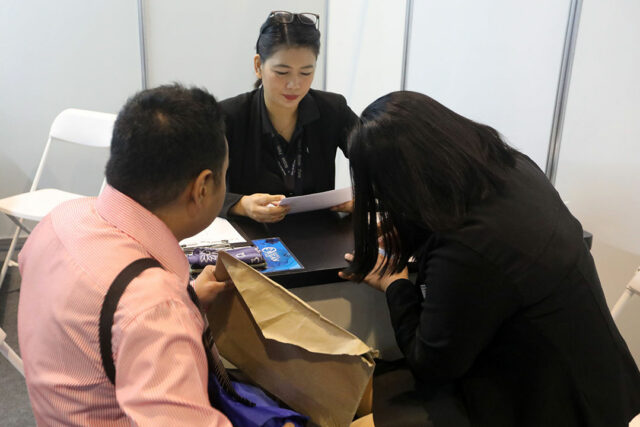
By Chloe Mari A. Hufana, Reporter
THE PHILIPPINES’ unemployment rate rose to 3.8% in September from a year earlier, signaling a fragile labor recovery as natural disasters disrupted hiring ahead of the holiday season, data from the Philippine Statistics Authority (PSA) showed on Thursday.
About 1.96 million Filipinos were jobless during the month, up from 1.89 million a year earlier, when the jobless rate was 3.7%, National Statistician Claire Dennis S. Mapa told a news briefing, citing the impact of typhoons and earthquakes on employment.
Despite this, Labor Secretary Bienvenido E. Laguesma told BusinessWorld that he is “hopeful” the upcoming holiday period will spur hiring activity.
The latest jobless rate was an improvement from August’s 3.9%, when 2.03 million were out of work.
Employment stood at 49.6 million in September, slightly below September 2024’s 49.87 million.
“[Holiday hiring] usually starts in the month of September, but the pickup typically happens in the fourth quarter,” Mr. Mapa said in Filipino, noting the October results will show if hiring activity indeed picked up.
“There’s a substantial seasonality component during the fourth quarter,” he added.
For the first nine months, joblessness stood at 4.1%, a tad higher compared to the same period last year of 4%.
The other service activities industry posted the largest drop in employment annually, shedding 493,000 workers, followed by administrative and support service activities (-356,000), manufacturing (-302,000), transportation and storage (-233,000), and public administration and defense and compulsory social security (-220,000).
On a monthly basis, the other service activity industries lost 498,000 workers, followed by construction (-308,000), transportation and storage (-247,000), and financial and insurance activities (-105,000).
Explaining the almost half-a-million month-on-month drop in the other service activities sector, Mr. Mapa said this might be tied to household income.
“I can surmise that this is possibly related to household income,” he said in Filipino, noting that during the first and second quarters of the year, there was a substantial increase in domestic services. “Usually, when the income is a bit higher, this number also tends to be higher.”
For the job losses in the manufacturing industry, Mr. Mapa said this may be due to global trade uncertainty.
Job losses were seen in the areas of ready-made embroidered garments manufacturing, manufacture of electronic walls and tubes, and manufacturing of parts and accessories for motor vehicles.
Mr. Mapa noted that the manufacturing sector saw jobs decline by around 208,000 workers in the first nine months of the year.
“It’s possible that this is linked to our exports, since most of our manufacturing companies export their products — and we’re currently facing problems in global trade,” he said.
In August, the US began imposing a 19% tariff on most Philippine-made goods.
Meanwhile, employment rate stood at 96.2% in September, a tad lower than 96.3% in the same period last year.
This means 49.6 million Filipinos had jobs in September, which was lower compared to 49.87 million last year.
For the first nine months of 2025, the employment rate averaged at 95.9%, slightly lower than last year’s 96%.
The construction industry had the most job gains in September, adding 514,000 employees, followed by fishing and aquaculture (+313,000), accommodation and food service activities (+307,000), human health and social work activities (+183,000), and agriculture and forestry (+126,000).
Craft and related trades workers added 280,000 workers annually, while elementary occupations added 119,000 jobs.
Compared to August 2025, 280,000 managerial jobs were added in September, followed by clerical support workers (+138,000) and technicians and associate professionals (+104,000).
UNDEREMPLOYMENT
Job quality strengthened year on year as the underemployment rate — the share of workers seeking more hours or jobs — eased to 11.1% from 11.9% a year ago. However, it worsened from 10.7% in August due to slower activity in construction.
The labor force participation rate slipped to 64.5% in September from 65.7% a year earlier, translating to 208,000 fewer people in the workforce, the PSA reported.
Roughly 572,000 workers also left the labor force month on month.
Employment in the Philippines’ construction industry increased in September, but many workers were unable to work full-time as underemployment rose, according to Mr. Mapa.
Mr. Mapa said the impact of ongoing investigations into anomalous flood control projects is not yet fully reflected in labor force data. He noted government spending and project disbursements are captured in the gross domestic product report, which will be released on Friday.
“What we’re seeing in the labor force data is an increase in workers in the construction industry. Year-on-year — from January to September — there was a slight increase. However, we also observed a rise in underemployment,” Mr. Mapa told reporters after the briefing in mixed English and Filipino.
“When underemployment increases, it means that not all workers in that industry were able to work full-time, say 40 hours a week; some may have only worked on specific days or for fewer hours.”
OUTLOOK
In a note, Chinabank Research said September jobs data suggest the labor market remains “robust.”
“This fourth quarter, we could see better employment numbers, driven by an expected increase in demand as the holidays approach, though weather-related disruptions and external challenges could temper these gains,” it said.
Chinabank said there may be a seasonal boost in employment during the holidays, particularly in retail and tourism-related sectors like accommodation and food services.
“Potentially softer external demand amid steep US tariffs remains a risk to manufacturing activity and jobs. Additionally, weather disturbances and calamities could lead to job losses in affected areas,” it said.
University of the Philippines Diliman School of Labor and Industrial Relations Assistant Professor Benjamin B. Velasco warned that the Philippine labor market is suffering from a “double whammy” of climate impact and corruption.
“More Filipinos out of work due to natural disasters and the flood control ban, not just year on year but also month on month. If we add the half million who left the work force to the 1.96 million who are technically unemployed, that is much more than the 2.03 officially jobless in August,” he said via Messenger.
Mr. Velasco warned that the ongoing political and environmental crises will prolong the labor slump unless the government takes deliberate action.
“If the private sector is not providing enough jobs, then the government must take up the slack.”
DBM says P1.3-trillion spending to lift economy
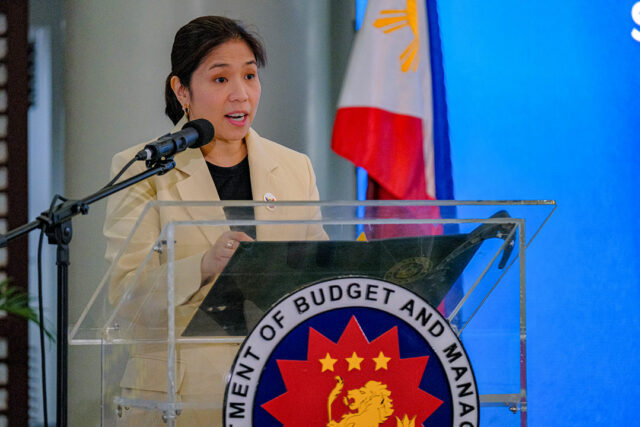
THE GOVERNMENT is betting that its P1.31-trillion programmed spending for the fourth quarter will lift full-year economic growth this year, Budget Secretary Amenah F. Pangandaman said on Thursday.
The Department of Budget and Management (DBM) has programmed P1.31 trillion for disbursement during the October-to-December period.
“Our programmed spending for the fourth quarter will boost year-end economic growth and thus impact overall economic growth for the year,” Ms. Pangandaman, who also serves as the Development Budget Coordination Committee chairperson said.
In the first six months of 2025, the gross domestic product grew by 5.4%, slightly below the government’s 5.5% to 6.5% growth goal.
The third-quarter data will be released on Nov. 7.
However, the economy faces a possible slowdown as government spending is affected by a widening corruption scandal.
Ms. Pangandaman has said the slowdown in public infrastructure spending is temporary, with spending expected to “catch up” in the remaining months of the year.
The bulk of the amount allocated for social services, following President Ferdinand R. Marcos, Jr.’s directive “to ensure that spending for the final stretch of 2025 directly benefits the Filipino people,” the DBM said.
The DBM said P2.74 billion was allotted for the National Disaster Risk Reduction and Management Fund (NDRRMF), which will go to the Quick Response Fund (QRF), as well as emergency cash transfers.
QRFs are built-in budgetary allocations that represent pre-disaster or standby funds for agencies in order to immediately assist areas stricken by catastrophes and crises.
In addition, the DBM released P9.52 billion to the Department of Social Welfare and Development to fund key social protection programs, including the remaining balance for the Pantawid Pamilyang Pilipino Program (4Ps).
It also disbursed P7.03 billion for payouts under the Assistance to Individuals in Crisis Situation (AICS), P5.77 billion for social pensions for indigent senior citizens, and P4.83 billion for the social aid program Ayuda sa Kapos ang Kita (AKAP).
In addition, the Department of Agriculture has been allocated P7.33 billion for the National Rice Program, and P2.47 billion for the National Livestock Program.
“Another P2.29 billion is also available under the National Food Authority for the buffer stocking program and targeted rice distribution program to ensure the availability of rice, especially in case of unforeseen domestic and global headwinds,” it said.
For the education sector, the DBM released P203.82 billion for the Department of Education for the fourth quarter, with P153.71 billion allocated for benefits and year-end bonus of teachers and personnel. An additional P11.4 billion has been disbursed for the Salary Standardization Law adjustments.
Meanwhile, P23.62 billion is released for the operations of schools, while P32.79 billion is earmarked for government assistance and subsidies.
State Universities and Colleges and the Commission on Higher Education received P31.78 billion, which will fund the implementation of key higher education programs and funding of personnel benefits and requirements.
For the labor sector, the DBM disbursed P4.89 billion for the Department of Labor and Employment’s livelihood and emergency employment programs.
Meanwhile, the healthcare sector received P4.3 billion for the support of operational expenses of hospitals in Metro Manila and P9.96 billion for regional hospitals.
The DBM also released P787.95 million worth of subsidies under the Medical Assistance to Indigent and Financially-Incapacitated Patients and another P179 million for the Cancer Assistance Fund.
In addition, P528.09 million has been earmarked for Department of Migrant Workers’ programs such as the Overseas Filipino Workers Hospital, the Agarang Kalinga at Saklolo para sa mga OFWs na Nangangailan Fund, and the National Reintegration Center for OFWS.
Out of this fund, P321 million has been allotted for the Emergency Repatriation Program of the Overseas Workers Welfare Association.
In a separate statement on Thursday, the Department of Finance said the government will disburse P63.69 billion in year-end bonuses and P9.24 billion in cash gifts to over 1.85 million state employees nationwide.
As of Oct. 27, the DBM has already disbursed P1.133 trillion of Notices of Cash Allocations out of the P1.307-trillion program for the fourth quarter. — Aubrey Rose A. Inosante

